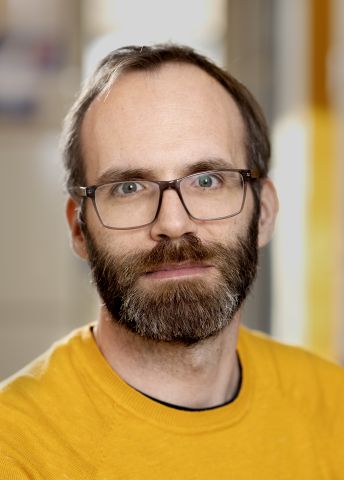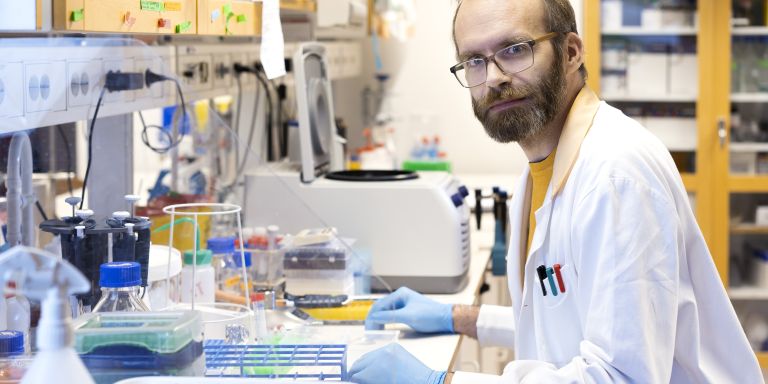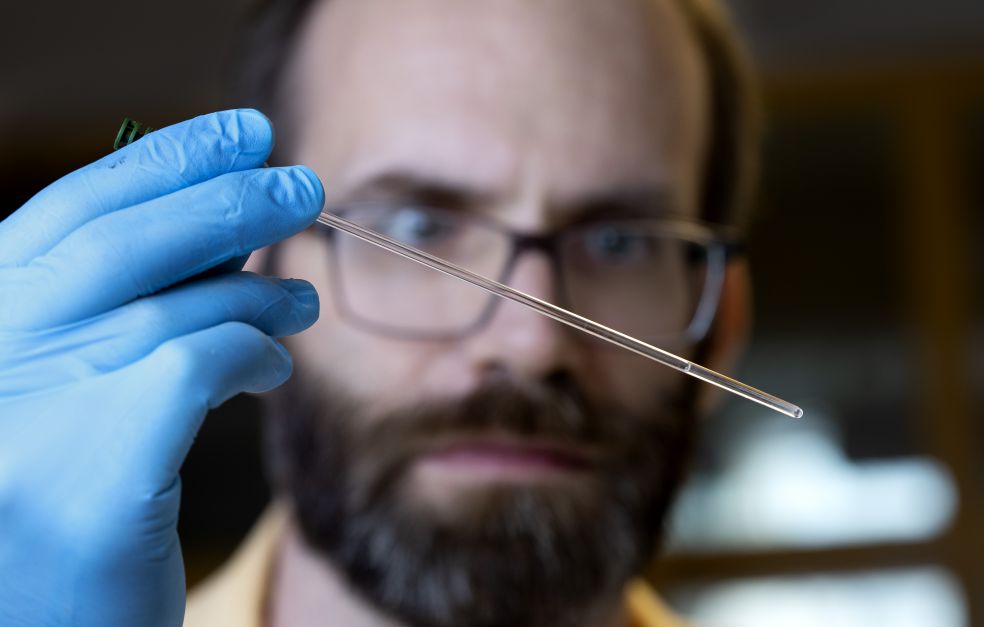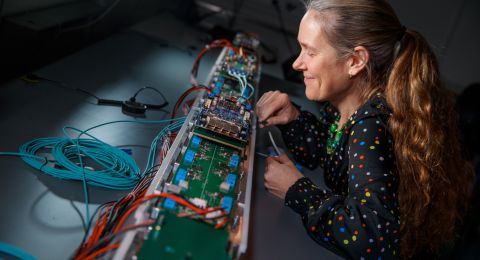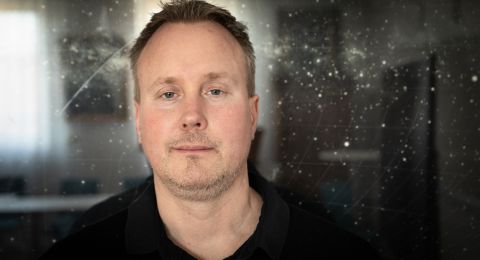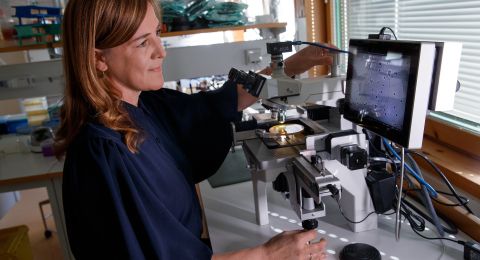The body’s cells require constant cleaning to ensure that broken or exhausted proteins do not pile up and cause harm. Wallenberg Academy Fellow Björn Burmann is making a detailed study of the clean-up process. This may ultimately lead to better therapies for certain types of cancer and Parkinson’s disease.
Björn Burmann
PhD in biochemistry, specializing in life sciences
Wallenberg Academy Fellow, prolongation grant 2020
Institution:
University of Gothenburg
Research field:
Proteins underlying essential cellular functions
Proteins perform numerous vital and disparate functions in our bodies. They transport and store various substances, make muscles contract, protect us against viruses and bacteria, pass on signals, regulate processes, and carry out many other tasks. They are made up of large molecules consisting of long chains of interlinked amino acids, whose complex and highly varied forms give them their different functions.
“Textbooks tend to give the impression that protein form static structures. But in fact they’re often dynamic, with parts that move, like miniature machines. I want to understand how these biological machines do their job in the cells,” says Burmann, who is researching at the Department of Chemistry and Molecular Biology and the Wallenberg Centre for Molecular and Translational Medicine at the University of Gothenburg.
He is originally from Germany, and was recruited in 2016 as a top young researcher to Sweden and the University of Gothenburg under the Wallenberg Academy Fellow scheme. He had already made a name for himself through ground-breaking contributions to our understanding of how “chaperones” – proteins that help other proteins to fold into the right structure – do their job.
Miniature compass needles
The technology that Burmann is using to study proteins, which he was one of first in the world to use on chaperones and the proteins that they transport or fold, is called NMR (nuclear magnetic resonance) spectroscopy. It makes use of the phenomenon whereby some atomic nuclei behave like miniature compass needles when placed in a magnetic field. When the atomic nuclei are also exposed to short radio wave pulses, they emit a signal, whose frequency depends on the strength of the magnetic field, the kind of atom in question, and the environment surrounding the atomic nucleus.
“The technique is fairly similar to that used for MRI scans in hospitals. But we use much stronger magnets, which give much better resolution,” Burmann explains.
Burmann and his fellow researchers are analyzing the signals from the atomic nuclei, using them to base their conclusions about the atoms present in the protein and the nature of its structure. One advantage that NMR spectroscopy has over other methods of determining protein structure is that the proteins can be studied as they move freely in a fluid. The researchers make a number of successive measurements, enabling them to obtain clues about how the various parts of the protein move in relation to each other.
“Studying the dynamics is a complicated process – it can take a whole week to measure a single sample.”
Damaged cellular DNA
Plentiful access to NMR equipment was one of the reasons he chose to move to Gothenburg which hosts the Swedish NMR Centre. At the few facilities dotted around Europe where this type of advanced NMR equipment is available there are far more research teams competing for user time.
“I’m honored to have received renewed funding under the Academy Fellow scheme. It means I can continue my research and follow up my ideas.”
During his first stint as a Wallenberg Academy Fellow Burmann studied how proteins help to repair damaged cellular DNA. Ultraviolet radiation from the sun breaks down DNA molecules in living cells all the time, but complicated mechanisms in the cell usually enable it to repair the damage.
“DNA can be repaired in various ways, involving two separate process lines in bacteria. We discovered that interchange can take place between the two lines during the repair process. This made our work more challenging than we had anticipated, but we have nonetheless managed to improve our understanding of certain steps in the processes.”
Cellular clean-up squad
Thanks to extended funding under the Wallenberg Academy Fellow scheme, Burmann can now investigate the cellular clean-up process.
“I want to learn more about how the cell detects and disposes of broken proteins. In certain diseases the clean-up process doesn’t work, causing an accumulation of protein detritus in the cells, which is often harmful.”
The cellular clean-up crew includes enzymes known as proteases. They shred exhausted proteins by breaking up the chemical bonds between the protein’s amino acids.
“Proteases clean up constantly. Earlier research, in which proteases were crystallized and examined using X-rays, has given us an idea of their structure, but gaps in our knowledge of protease structure and in particular of their function remain to be investigated.”
Burmann and his team already have managed to identify a kind of temperature sensor in the structure of one protease. It was already known that this protease was regulated by the surrounding temperature, but no one knew exactly how.
“We want to go on to ascertain how cellular clean-up works, right down to amino acid level.”
The structure of proteases can largely be determined by studying them in aqueous solution. But Burmann wants to go further and study the proteins in samples that more closely resemble their natural environment.
“The main challenge is to obtain good samples that are stable for at least a week, since the measurements can take that long.”
His research is driven primarily by curiosity. Most of all, he likes it when his experiments yield unexpected results.
“It means I might be on to something important.”
Text Ingela Roos
Translation Maxwell Arding
Photo Johan Wingborg
